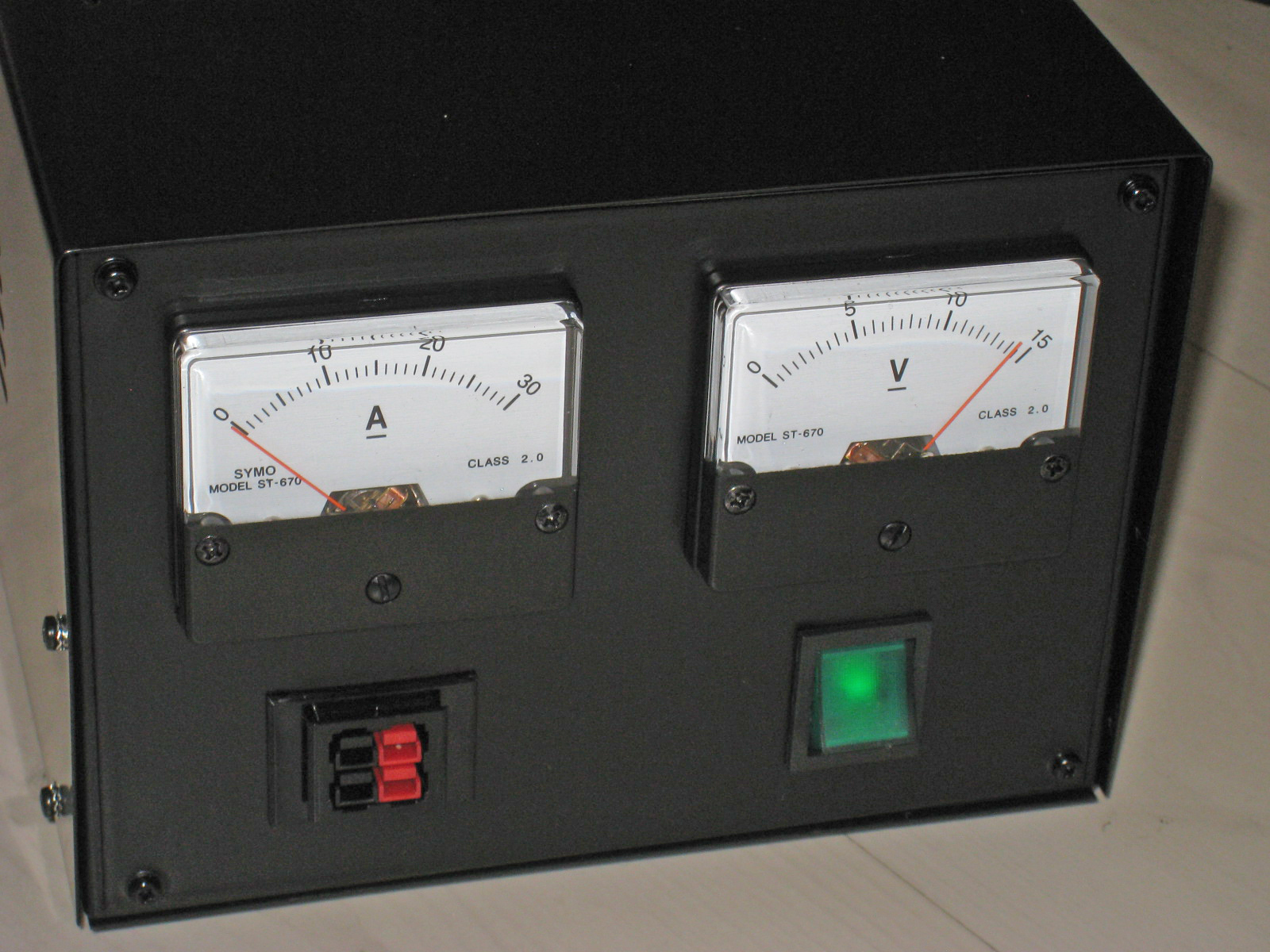|
Load Regulation
Load regulation is the capability to maintain a constant voltage (or current) level on the output channel of a power supply despite changes in the supply's load (such as a change in resistance value connected across the supply output). Definitions Load regulation of a constant-voltage source is defined by the equation: :\%\text = 100\% \, \frac Where: * V_ is the voltage at maximum load. The maximum load is the one that draws the greatest current, i.e. the lowest specified load resistance (never short circuit); * V_ is the voltage at minimum load. The minimum load is the one that draws the least current, i.e. the highest specified load resistance (possibly open circuit for some types of linear supplies, usually limited by pass transistor minimum bias levels); * V_ is the voltage at the typical specified load. For a constant-current supply, the above equation uses currents instead of voltages, and the maximum and minimum load values are when the largest and smallest specified vol ... [...More Info...] [...Related Items...] OR: [Wikipedia] [Google] [Baidu] |
Power Supply
A power supply is an electrical device that supplies electric power to an electrical load. The main purpose of a power supply is to convert electric current from a source to the correct voltage, current, and frequency to power the load. As a result, power supplies are sometimes referred to as electric power converters. Some power supplies are separate standalone pieces of equipment, while others are built into the load appliances that they power. Examples of the latter include power supplies found in desktop computers and consumer electronics devices. Other functions that power supplies may perform include limiting the current drawn by the load to safe levels, shutting off the current in the event of an electrical fault, power conditioning to prevent electronic noise or voltage surges on the input from reaching the load, power-factor correction, and storing energy so it can continue to power the load in the event of a temporary interruption in the source power ( uninterr ... [...More Info...] [...Related Items...] OR: [Wikipedia] [Google] [Baidu] |
National Instruments
National Instruments Corporation, doing business as NI, is an American multinational company with international operation. Headquartered in Austin, Texas, it is a producer of automated test equipment and virtual instrumentation software. Common applications include data acquisition, instrument control and machine vision. In 2016, the company sold products to more than 35,000 companies with revenues of US$1.23 billion. History Founding In the early 1970s, James Truchard, Jeff Kodosky, and Bill Nowlin were working at the University of Texas at Austin Applied Research Laboratories. As part of a project conducting research for the U.S. Navy, the men were using early computer technology to collect and analyze data. Frustrated with the inefficient data collection methods they were using, the three decided to create a product that would enable their task to be done more easily. In 1976, working in the garage at Truchard's home, the three founded a new company. They att ... [...More Info...] [...Related Items...] OR: [Wikipedia] [Google] [Baidu] |
Line Regulation
Line regulation is the ability of a power supply to maintain a constant output voltage Voltage, also known as electric pressure, electric tension, or (electric) potential difference, is the difference in electric potential between two points. In a static electric field, it corresponds to the work needed per unit of charge t ... despite changes to the input voltage, with the output current drawn from the power supply remaining constant. :\text = \frac \cdot 100\% where ΔVi is the change in input voltage while ΔVo is the corresponding change in output voltage. It is desirable for a power supply to maintain a stable output regardless of changes in the input voltage. The line regulation is important when the input voltage source is unstable or unregulated and this would result in significant variations in the output voltage. The line regulation for an unregulated power supply is usually very high for a majority of operations, but this can be improved by using a voltage re ... [...More Info...] [...Related Items...] OR: [Wikipedia] [Google] [Baidu] |
Linear Regulator
In electronics, a linear regulator is a voltage regulator used to maintain a steady voltage. The resistance of the regulator varies in accordance with both the input voltage and the load, resulting in a constant voltage output. The regulating circuit varies its resistance, continuously adjusting a voltage divider network to maintain a constant output voltage and continually dissipating the difference between the input and regulated voltages as waste heat. By contrast, a ''switching regulator'' uses an active device that switches on and off (oscilates) to maintain an average value of output. Because the regulated voltage of a linear regulator must always be lower than input voltage, efficiency is limited and the input voltage must be high enough to always allow the active device to drop some voltage. Linear regulators may place the regulating device in parallel with the load ( shunt regulator) or may place the regulating device between the source and the regulated load (a series re ... [...More Info...] [...Related Items...] OR: [Wikipedia] [Google] [Baidu] |

